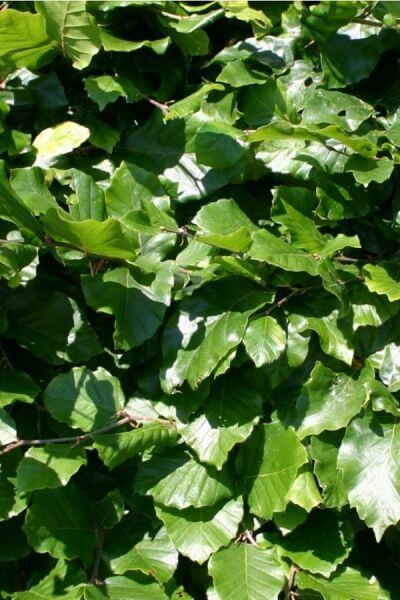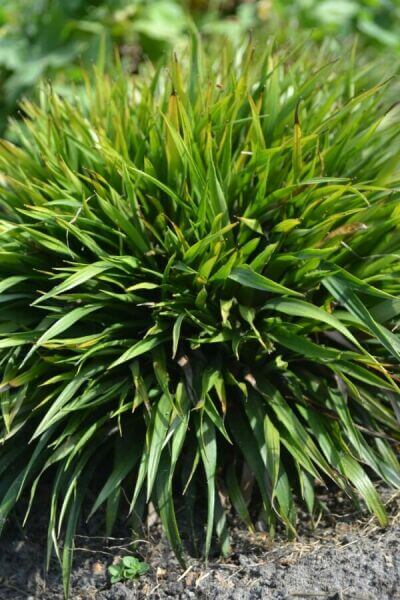Best Hedging Plants For Informal Borders
Best Hedging Plants For Informal Borders
Blog Article
Hedge Plants For Natural Landscapes
Boost your garden's appeal with lush hedge varieties such as Yew (Taxus), Thuja, Laurel, Photinia, and Bamboo, commemorated for their structural integrity and ecological benefits.
Yew and Thuja supply evergreen coverage and winter strength, while Laurel offers quick development and broad, fragrant leaves.
Photinia adds seasonal beauty with its vibrant red foliage, and Bamboo provides a low-maintenance, tranquil atmosphere.
These hedges improve air quality, minimize noise, and develop tranquil, private areas.
Proper planting, spacing, and maintenance guarantee energetic development and environmental consistency.
Check out how these rich ranges can raise your garden's beauty and well-being.
Secret Takeaways
Change Your Garden With Lush Hedge Ranges
- Select Yew for its thick, evergreen growth and unrivaled durability.
- Go with Laurel for its fast growth and broad leaves, ensuring fast privacy.
- Choose Photinia for its dynamic seasonal foliage, which turns a striking dark red.
- Use Bamboo for a low-maintenance, winter-hardy hedge with visual appeal.
- Area plants 2-3 per meter and prune regularly for optimal growth and health.
Popular Hedge Plants
When transforming a garden with rich hedge varieties, it's important to think about popular hedge plants such as Yew, Thuja, Laurel, and Photinia due to their special attributes and benefits.
Yew (Taxus) is highly esteemed for its longevity and dense, green growth, making it a prime choice for enduring landscapes.
Thuja is noted for its evergreen foliage and robust winter resilience.
Photinia adds seasonal vibrancy with red leaves that darken over time, creating dynamic visual appeal.
Laurel provides fast development and aromatic, broad leaves, ideal for quick personal privacy.
In Addition, Bamboo is an outstanding choice for atmosphere, using a low-maintenance, winter-hardy alternative that boosts the garden's visual with its sophisticated, swaying walking canes.
These choices cater to a variety of horticultural requirements and choices.
Advantages of Garden Hedges
Garden hedges provide a wide range of benefits, making them a valuable addition to any landscape. These natural barriers are economical to execute and provide substantial wind security, improving air circulation and adding to noise decrease. The thick foliage of hedges like Thuja and Beech makes sure privacy by obstructing presence, producing a serene and remote environment.
Hedges likewise play an essential function in microclimate policy, providing a steady environment that fosters plant development and lessens temperature fluctuations. Their elaborate leaf structures filter toxins, enhancing air quality and contributing to a much healthier garden ecosystem.
Moreover, hedges master noise decrease, absorbing and deflecting acoustic waves to lower ambient noise levels. This double performance of providing both acoustic and visual privacy improves the total serenity and visual appeal of any garden.
Planting and Maintenance Tips
For a successful hedge, careful preparation of the planting area is important. Make sure the soil has proper pH and drainage to support strong root advancement.
Space the plants properly for the chosen types. Water the hedge often throughout its initial growth phase, changing as required with seasonal changes.
Execute a methodical pest control and illness prevention strategy, using natural or chemical treatments when necessary. Routinely examine for aphids, termites, and fungal infections.
Apply mulch to maintain wetness and reduce weeds. Seasonal pruning promotes dense growth and air circulation, important for plant health.
Following these standards will assist you cultivate a lively, well-maintained hedge that enhances the beauty of your garden.
Spacing and Trimming Guidelines
Spacing and Trimming Guidelines
Proper spacing and trimming are crucial for cultivating healthy, visually appealing hedges. Sufficient spacing guarantees each plant gets adequate nutrients, light, and air flow.
Follow these guidelines for optimum hedge upkeep:
- Spacing: Position hedge plants 2-3 plants per meter to motivate robust development.
- Pruning Strategies: Routine pruning is necessary for maintaining desired hedge height and shape. Trim new growth in summertime and cut back older wood during winter.
- Seasonal Care: Change cutting approaches and schedules according to seasonal requirements to guarantee plant health.
- Hedge Height: Routinely monitor and trim to keep the wanted hedge height and attain uniform aesthetic appeals.
Adhering to these actions will guarantee your hedge flourishes, enhancing both the appeal and performance of your garden.
Selecting the Right Hedge
Choosing the Right Hedge
Picking the suitable hedge involves examining elements such as mature height, foliage density, and ecological durability. Successful hedge plant choice requires comprehending each species' growth attributes and site-specific adaptability.
For instance, Yew (Taxus) provides exceptional durability and dense development, while Thuja is significant for its winter strength. Furthermore, considering upkeep requirements is crucial; fast-growing types like Laurel or Privet demand routine trimming, whereas low-maintenance choices like Bamboo or Ivy might be more effective for those seeking very little maintenance.
Environmental aspects such as soil type, light availability, and wetness conditions should likewise assist the selection procedure. This cautious method makes sure the chosen hedges will prosper, providing both functional and aesthetic advantages to the garden landscape.
Shipment and Planting Suggestions
To ensure your hedge plants flourish, they need to be delivered by specialized couriers and planted without delay upon arrival.
Follow these essential actions for successful planting:
- Soil Preparation: Enhance the soil with organic matter to improve drainage and nutrient material.
- Planting Depth: Create a trench twice the width and equivalent to the depth of the root ball.
- Watering Strategies: Water thoroughly after planting, keeping the soil consistently damp however not filled.
- Mulching: Apply a layer of mulch to keep wetness and reduce weeds.
Consumer Support and Service
Given the essential function of prompt help in horticultural pursuits, our consumer support team is available six days a week through telephone, email, and social networks to provide skilled guidance and quickly attend to any issues. Their devotion to fast response times ensures customer satisfaction by resolving queries associated with plant health, optimal planting methods, and maintenance schedules.

Action Time
-------------------
6 days a week
Within two days
This comprehensive support system, strengthened by an excellent 9.3/ 10 consumer ranking, highlights our dedication to enhancing the gardening experience for every client.
Frequently Asked Questions
For How Long Does It Take for Hedge Plants to Establish?
Hedge plants typically require one to three years to become fully established, with the exact duration varying by species and growing conditions.
Efficient care throughout this vital period is important for robust growth. Constant watering, watchful weed control, and proper fertilizer application are essential in promoting strong root advancement.
For instance, fast-growing species like Laurel may establish faster, while slower-growing ranges such as Yew may take longer. Persistent upkeep speeds up the facility process, resulting in dense and healthy hedges.
What Are the Finest Hedge Plants for Privacy?
The question of the very best hedge plants for personal privacy includes assessing evergreen and deciduous options.
Evergreen hedges like Thuja, Laurel, and Cypress provide year-round protection, guaranteeing continuous personal privacy.
On the other hand, deciduous hedges such as Beech provide seasonal privacy, shedding leaves in cooler months.
Key maintenance pointers for privacy hedges include routine trimming, fertilizing in spring, and proper spacing-- normally 2 to 3 plants per meter.
Furthermore, constant watering and persistent weed removal are vital for promoting healthy, dense growth.
Can Hedge Plants Bring In Wildlife to My Garden?
Yes, hedge plants can draw in wildlife to your garden by supplying vital benefits like shelter, food, and nesting websites, thereby boosting regional biodiversity. Yew, holly, and laurel are exceptional for drawing in birds, while ivy supports a range of insects.
Nevertheless, it is very important to keep in mind that there are some drawbacks, such as increased upkeep to handle pests and routine maintenance. Carefully picking and maintaining hedge varieties can assist balance these benefits and downsides, eventually fostering a sustainable and lively ecosystem in your garden.
Are There Any Blooming Hedge Plants Available?
Yes, there are flowering hedge plants available that can enhance the charm of your garden.
For instance, Elaeagnus, also referred to as Olive Willow, produces fragrant white flowers in the fall, including a touch of sophistication.
Photinia, another popular choice, showcases vibrant red leaves that develop into an abundant green, developing a vibrant visual effect throughout the seasons.
To ensure these plants flourish, it's necessary to practice correct pruning techniques and seasonal maintenance, such as trimming new growth in the summertime and cutting down in the winter season.
These procedures will assist keep the health and visual appeal of your blooming hedges.
How Do I Prevent Pests in My Hedge Plants?
To prevent pests in hedge plants, employ natural pest control methods and maintain proper hedge care. Introduce advantageous insects like ladybugs, which take advantage of hazardous pests, to create a well balanced environment.
Frequently check your hedges for signs of infestation and promptly remove any afflicted parts to avoid the spread. Make sure the health of your hedges by using balanced fertilizers and offering adequate water.
Utilize mulching to maintain soil wetness and appropriate spacing to decrease plant stress and promote robust growth. These practices jointly assist in lessening pest issues and keeping a healthy hedge.
Conclusion
In essence, selecting the best hedge varieties such as Yew, Thuja, and Laurel can change any garden into a relaxing haven. These plants provide year-round plant, improve aesthetic appeal, and offer practical advantages like sound reduction and wind defense.
Appropriate planting techniques, precise spacing, constant watering, and seasonal trimming are essential for ideal growth.
Dependable shipment services and professional customer assistance ensure a smooth experience from purchase to planting, making it simpler than ever to raise your outdoor space.
Garden hedges use a wide variety of benefits, making them an important addition to any landscape. These natural barriers are cost-effective Additional reading to carry out and provide substantial wind security, boosting air flow and contributing to sound reduction. The thick foliage of hedges like Thuja and Beech ensures privacy by blocking visibility, producing a serene and remote environment.

Pruning Strategies: Regular pruning is important for keeping preferred hedge height and shape. Trim brand-new development in summer and cut back older wood throughout winter.
Report this page